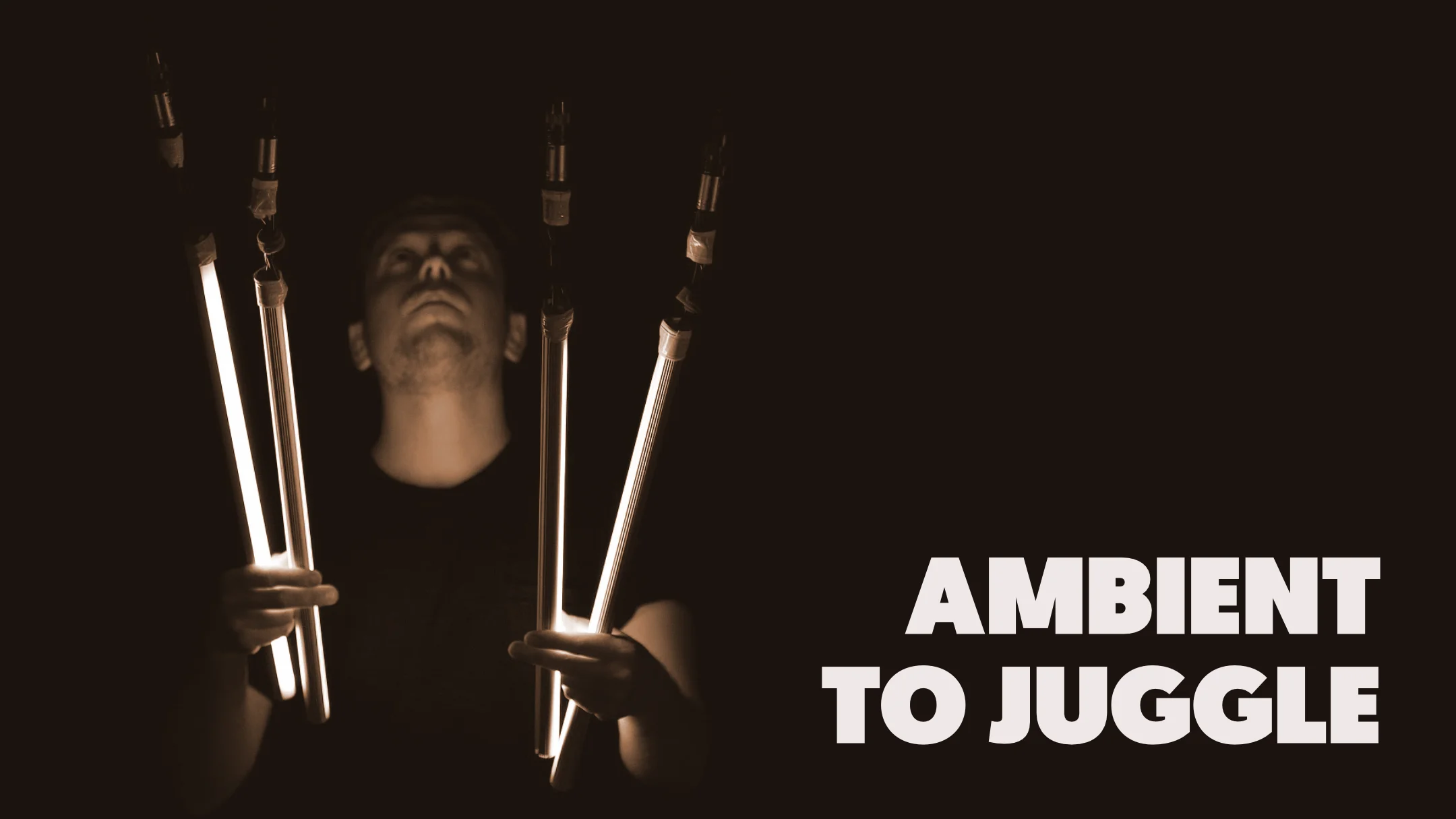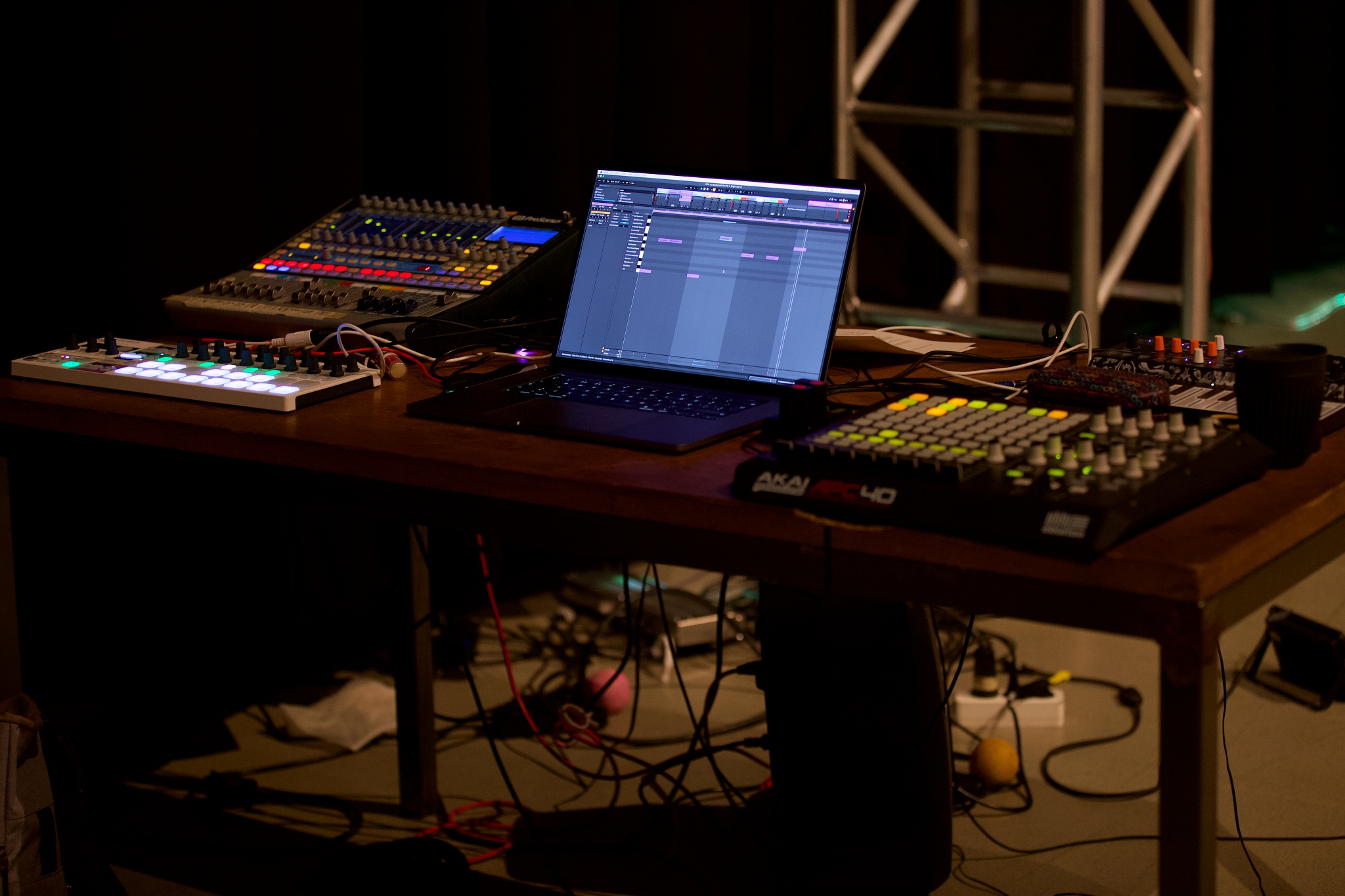Juggling invites a state of focus where patterns can unfold naturally. Finding the right conditions to sustain that focus is part of the practice itself. For me, ambient music plays a quiet but essential role. It doesn’t dominate the session or demand attention. Instead, it complements the process, aligning with the ebb and flow of juggling.
Flexible sound for fluid movement
Juggling is built on rhythm, but the rhythm is internal. It comes from the relationship between throws, catches, and the timing of each adjustment. Ambient music is more flexible with the tempo of your juggling, offering a soundscape that moves with you instead of setting the pace. Patterns find their own rhythm, and the music simply follows along.
The consistency of ambient music makes it easier to stay present. Its gradual shifts encourage attention without pulling focus away from the objects in motion. This subtle interaction between sound and movement helps me settle into longer sessions, where the demands of juggling often shift between deliberate repetition and moments of exploration.
A Soundtrack for juggling experimentation
Juggling offers constant opportunities to explore. Every session is a chance to test new ideas, refine how patterns connect, or push a sequence in an unexpected direction. This exploration often hinges on rhythm and timing, where adjustments reveal insights. Ambient music fits well into this process. Its fluid structure doesn’t dictate a beat, leaving space to shift timing, experiment with throw heights, or approach movements from a different angle.
This openness becomes especially important in longer practices. Repetition is at the core of juggling, but it can lose momentum without small variations to keep the mind alert. The evolving layers of ambient music bring subtle changes that interact with the juggling, keeping attention sharp and helping patterns feel alive. These shifts sometimes reveal possibilities I might not have noticed, encouraging me to stay curious even during routines I’ve practiced countless times.
A playlsit that I use to juggle
Some pieces of ambient music have become part of my routine. “Zucht 2” by Machinefabriek, “A Sea of Love” by Huerco S., and “Fragment II” by Library Tapes all offer a tone that encourages focus and fluidity. Aphex Twin’s “#3” often brings an additional depth to my practice, sharpening my awareness of how patterns develop over time.
These tracks also help during sessions that feel less productive. There are days when patterns don’t settle or progress feels slow. Ambient music provides a sense of calm, making it easier to observe the juggling without frustration. This perspective often turns those difficult moments into opportunities for learning, shifting the focus toward adjusting and refining rather than forcing results.
Feel free to check out the full playlist below and see how the music influences your flow.
The relationship between juggling and ambient music lies in how the two complement each other. Ambient music provides a steady backdrop that supports focus, rhythm, and creativity. Instead of competing with the practice, the sound encourages attention to the small details that define juggling as a process of continuous discovery.
Exploring juggling with ambient music can bring unexpected insights. The interplay between sound and movement has a way of sharpening focus, revealing new perspectives on familiar patterns. Adding music to your practice might deepen the way you connect with your juggling.




Leave a Reply
You must be logged in to post a comment.